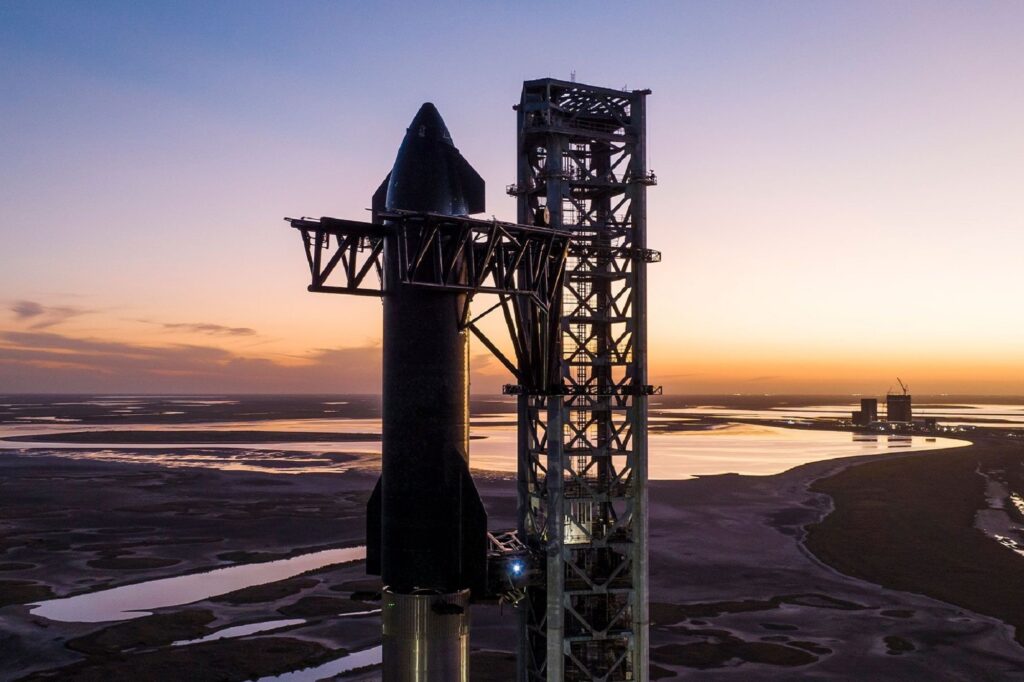SpaceX canceled the maiden launch of Starship, the largest rocket in the world.
After several tentative launches of the Starship prototype, SpaceX expected to launch the spacecraft using its super-powerful first stage, called Super Heavy, from the Starbase spaceport in Boca Chica, southern Texas.
In its full configuration, Starship towers at nearly 120 meters (390 feet). According to SpaceX, Starship can generate around 17 million pounds (75 million newtons) of thrust, twice as much as NASA’s “mega-rocket” equivalent, the Space Launch System (SLS). The spacecraft is slated to transport more than 220,000 pounds (100 metric tons) of cargo into orbit.
However, minutes before the launch was planned, the test was switched to a “wet dress rehearsal,” meaning that the process continued normally until T-minus 10 seconds.
The test was aborted over pressurization concerns. SpaceX should reattempt a launch after a minimum of 48 hours, the time needed to recycle the fuel.
Attempting the first launch of a full Starship rocket
Ahead of the launch, Elon Musk had tempered the public’s expectations during a Twitter “Spaces” live stream.
The fear was that one of Super Heavy’s 33 Raptor engines would explode and damage the others as well as the spaceport.
“If we get far enough away from launch pad before something goes wrong, then I think I would consider that to be a success. Just don’t blow up the pad,” Musk explained. “It would take us probably several months to rebuild the launchpad.”
The objective is for SpaceX to develop a vehicle capable of coming and going into space, hence the needed capability to take off and land vertically. The program is particularly crucial to NASA, as Starship is due to land astronauts on the Moon during the Artemis 3 mission, officially scheduled for 2025.
